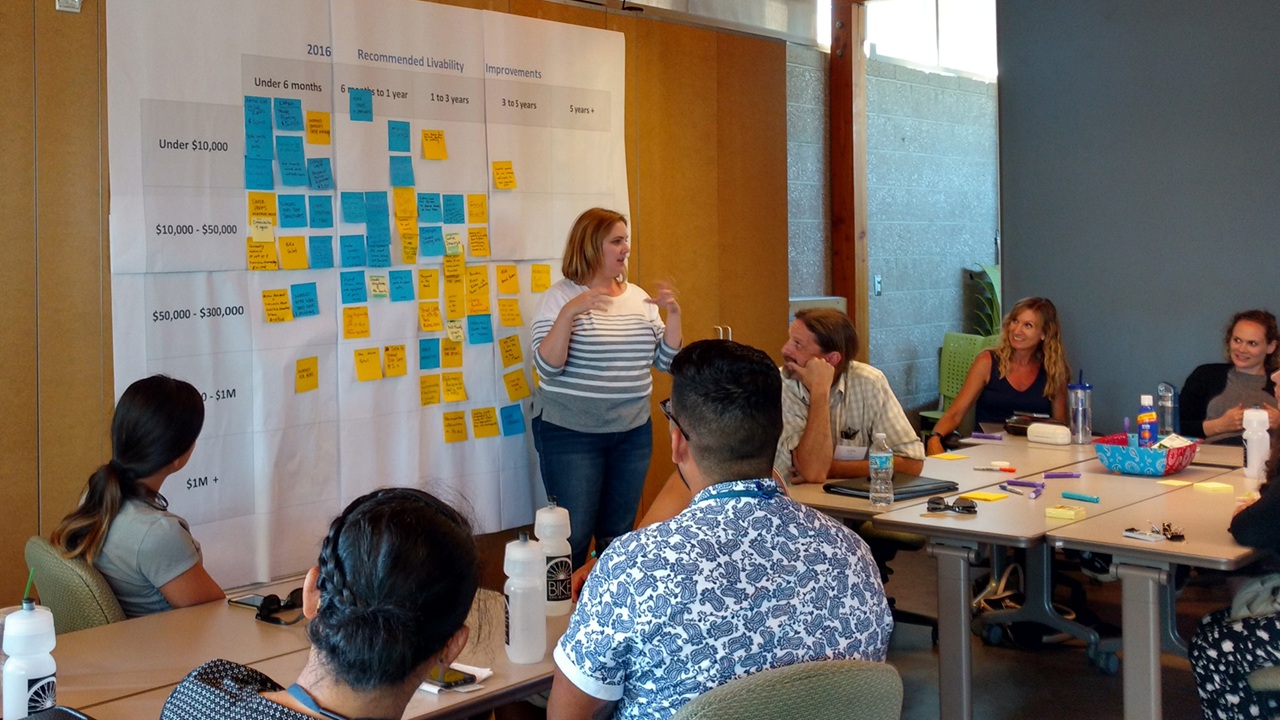
Leadership no longer looks like it did a decade ago, and I am here for it.
Behaviors from early in my local government career informed the way I thought about what power, influence, and success looked like. I heard stories about a manager who would throw away any correspondence that didn’t spell their name correctly, and another manager who screamed and threw chairs when they were frustrated. I witnessed managers mine ideas from up-and-coming staff and pass them off as their own or take credit for a group’s work to propel themselves up in the organization and were rewarded for it. I watched managers shut down ideas worth pursuing with the simplest “we’ve tried that before.”
I was even the subject of this behavior when I was put on the spot in an all-management meeting by a director who instructed me to move funding from one project to another, which was against city policy (and likely, the law). When I suggested an appropriate alternative, he loudly taunted “well aren’t you uppity” while a whole table of managers looked down the table at me in silence.
These “leadership” behaviors were not reserved for clandestine closed-door meetings; they were on display for everyone to see. And while there were plenty of good things about my early career experience, these managers signaled what success looked like as a leader:
- Giving orders rather than seeking input, valuing quick decision-making, even at the cost of inclusion.
- Treating someone who questioned as disruptive, reacting defensively to challenge or disagreement.
- Prioritizing compliance and hierarchy over collaboration, performance optics over substance.
- Viewing feelings as irrelevant or unprofessional.
- Dominating conversations, using volume or intensity to assert authority, and interrupting or talking over others (especially women or junior staff).
These leadership behaviors smothered any openness to other styles of leadership and there was little recognition of social-emotional skills. In this work environment, getting noticed and rewarded by these types of leaders meant assimilating to behave like those who were “successful” who came before me. Yet, these behaviors didn’t resonate with me. They wore down what I valued in myself, which has taken years to retool.
Looking back, these approaches never made sense to me in the local government context because our work to serve the community required a team of staff with diverse backgrounds and lived experiences to make decisions. And central to this are leaders who can listen deeply, adapt, and respond with humility, empathy, transparency, and inclusiveness to build public trust.
These outdated approaches also didn’t feel like me, and now that I’m in a place of leadership in local government, I’ve realized that much of what “success” looked like no longer serves me. I now see how power comes from feeling grounded and self-assured, not dominance or control of others from outdated leadership archetypes. And as it turns out, my leadership style is trending.
A recent study by economist Sylvia Ann Hewlett compared data from 2012 and 2022 showing the evolution of the perceptions of effective leadership traits across three core categories: gravitas, communication, and appearance. The study reveals a distinctive shift in how executive presence is defined and points to an era of leadership that values inclusion, emotional intelligence, and authenticity just as much as decisiveness and vision. The most effective leaders are those who are more inclusive, more empathetic, and more human. The path to credibility and authority as a leader has widened to include skills that were previously undervalued or even dismissed.
In 2012, confidence, decisiveness, integrity, and pedigree topped the list. In 2022, inclusiveness and respect for others surged in importance and pedigree dropped from being a top attribute. In the past, leaders were expected to command a room and project force. Now a listen-to-learn approach, ability to read a room, and authenticity have gained ground, and while conveying one’s message clearly, engagingly, and persuasively to an audience is still important, how one speaks matters more. Today, a polished appearance coupled with authenticity, health, and a curated online voice are valued over conventional beauty or physical presence. Leadership is now relational, not hierarchical, so a leader who shows up with intention, treats others well, and prioritizes inclusion, mental health, and trust is who others want to be around and support.
In local government, these changes aren’t just trends; they’re essential. Trust, community engagement, and interdepartmental collaboration are key drivers of local governments that effectively serve their communities. Local governments depend on leaders at every level who can connect—not just command—through:
- Inclusiveness and respect for others.
- Vision grounded in collaboration.
- Emotional intelligence and empathy.
- Authentic communication rooted in service.
- The ability to adapt across teams, platforms, and community needs.
Even though this human-centered leadership style was inherently with me all along, intentionally embracing it was still a hard transition because I had to unlearn decades of behavior that no longer served me, my team, my organization, or my community. Here are the leadership traits I work on to show up as my authentic self:
Gravitas
Practice inclusive decision-making. Solicit input across departments and communities. Create seats at the table for those historically marginalized. Affirm contributions and invite dissenting views.
Build a values-based narrative. Lead with the “why” behind policies and priorities.
Develop emotional awareness. Respond to tension or resistance with curiosity, not defensiveness. Admit and learn from mistakes and uphold shared values.
Communication
Listen to learn. Listen more than you speak. Lead meetings with open-ended questions and active reflection.
Sharpen your hybrid presence. Speak with clarity, use visuals well, and follow up thoughtfully. Be concise, calm, and purpose-driven. Zoom presence and asynchronous communication are now critical skills.
Own your voice. Authenticity doesn’t mean oversharing; it means aligning your communication with your values and personality.
Presence
Show up intentionally. Let values, not conformity, shape how you present. Balance assertiveness with empathy.
Curate your digital voice. Identify your values and develop your leadership voice. Use LinkedIn, newsletters, or internal communications to reinforce your presence.
Prioritize energy over perfection. Take care of your physical and mental well-being as leadership assets, not luxuries. Embody energy, not perfection.
Leadership traits once seen as “soft” are now recognized as strategic. As expectations evolve, so must our leadership development strategies and our recognition of who is ready to lead. For those early in your career journey, shake off the shackles of expectations to mimic outdated leadership styles. This is your permission to lead differently. For those already in positions of power, this is your invitation to model presence that is both powerful and personal. Embrace the full spectrum of what it means to lead with authenticity, empathy, and purpose.

MEREDITH REYNOLDS is deputy city manager of Long Beach, California, USA, and board chair of Engaging Local Government Leaders (elgl.org).
New, Reduced Membership Dues
A new, reduced dues rate is available for CAOs/ACAOs, along with additional discounts for those in smaller communities, has been implemented. Learn more and be sure to join or renew today!
